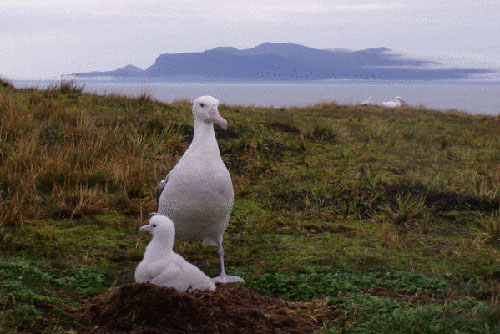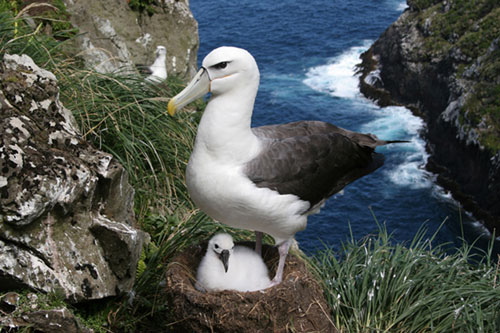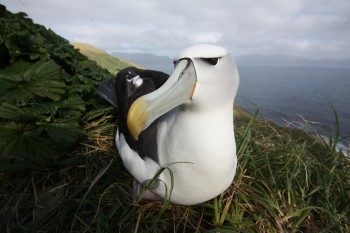Tina Cornioley (Department of Evolutionary Biology and Environmental Studies, University of Zurich, Switzerland) and colleagues have published open-access in the Proceedings of the Royal Society Biological Sciences on the relationships between body mass and breeding and survival in Wandering Albatrosses Diomedea exulans.
“One of the predicted consequences of climate change is a shift in body mass distributions within animal populations. Yet body mass, an important component of the physiological state of an organism, can affect key life-history traits and consequently population dynamics. Over the past decades, the wandering albatross—a pelagic seabird providing bi-parental care with marked sexual size dimorphism—has exhibited an increase in average body mass and breeding success in parallel with experiencing increasing wind speeds. To assess the impact of these changes, we examined how body mass affects five key life-history traits at the individual level: adult survival, breeding probability, breeding success, chick mass and juvenile survival. We found that male mass impacted all traits examined except breeding probability, whereas female mass affected none. Adult male survival increased with increasing mass. Increasing adult male mass increased breeding success and mass of sons but not of daughters. Juvenile male survival increased with their chick mass. These results suggest that a higher investment in sons by fathers can increase their inclusive fitness, which is not the case for daughters. Our study highlights sex-specific differences in the effect of body mass on the life history of a monogamous species with bi-parental care.”

A Wandering adult guards its chick on Marion Island, Prince Edward Island on the horizon, photograph by John Cooper
Read a news item on the paper here.
Reference:
Cornioley, T., Jenouvrier, S., Börger, L., Weimerskirch, H., & Ozgul, A. 2017. Fathers matter: male body mass affects life-history traits in a size-dimorphic seabird. Proceedings of the Royal Society Biological Sciences doi.org/10.1098/rspb.2017.0397.
John Cooper, ACAP Information Officer, 18 May 2017

 English
English  Français
Français  Español
Español 


